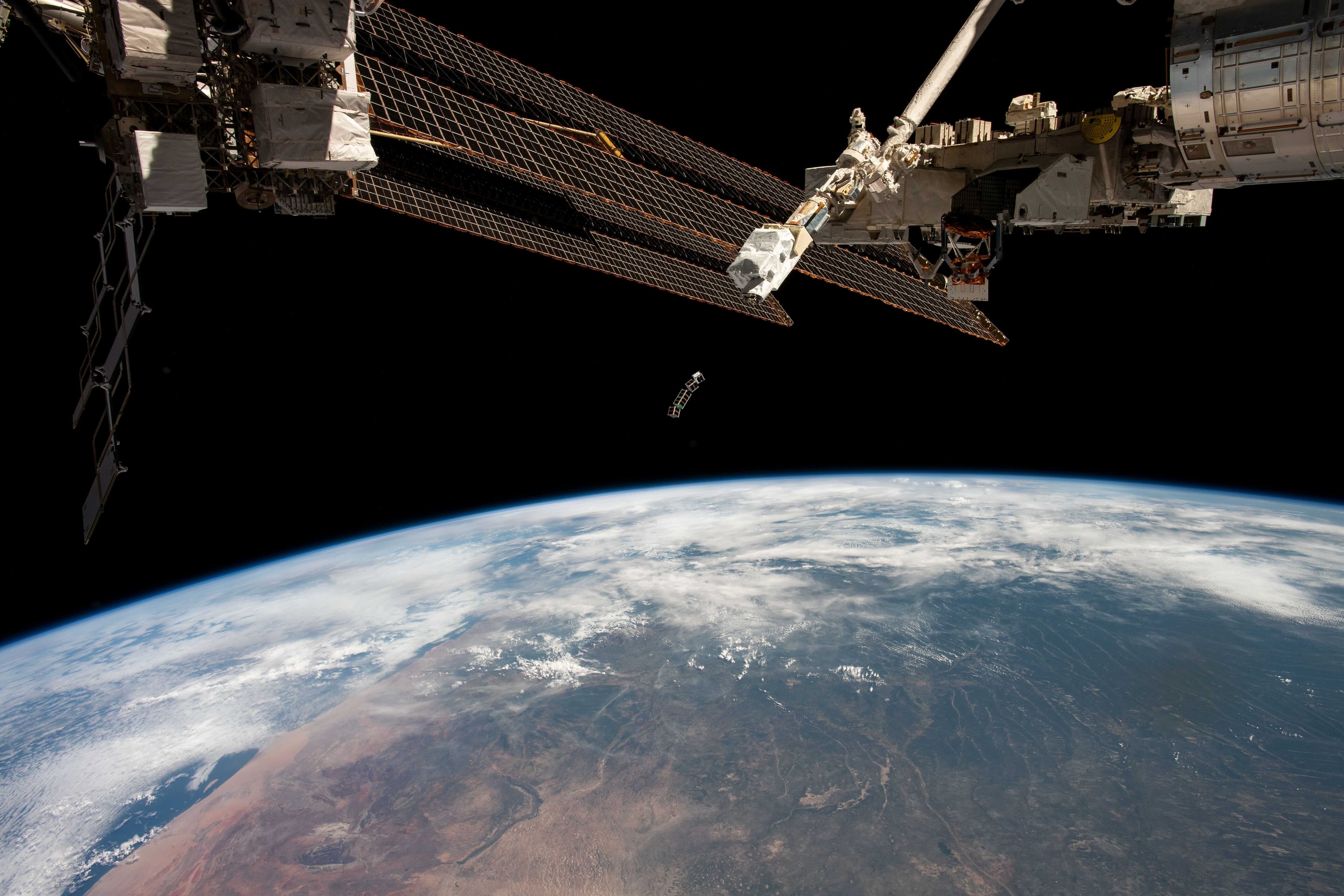Here's how satellites have changed the modern world

Satellite applications are now woven into the fabric of everyday life, with civilians depending on spacecraft for weather forecasts.
Image: REUTERS
Stay up to date:
Space
It’s been 60 years since the Soviet Union fired the first salvo of the space age. On October 4 1957 it launched Sputnik, the world’s first satellite, as its contribution to International Geophysical Year.
It was the first of a series of superpower spectaculars, each bringing soft power – the term political scientists use to describe states doing something benign which boosts their prestige. The USSR followed Sputnik’s launch by sending Yuri Gagarin, the world’s first cosmonaut, into space on 12 April 1961. He was followed by Valentina Tereshkova, the first woman to orbit the Earth, on 16 June 1963. The US landed 12 Americans on the moon between 1969 and 1972.
A great deal has changed in the past 60 years. Sputnik weighed 83kgs. The International Space Station weighs 419 tons, carrying a crew of six astronauts, performing a variety of experiments in microgravity. Many countries have their own space policies and space science has developed all over the world including in Africa.
Our fascination with space – whether it focuses on colonising distant planets, using satellites for profit or educational purposes, or unpacking complex weather patterns – shows no signs of slowing down.
Many uses for satellites
Today satellite applications are woven into the fabric of everyday life.
Soon after Sputnik’s launch, the military realised that spacecraft would be great for reconnaissance – spysats. These are now commonplace.
Satellites have offered great benefits for ordinary people, too. Civilians now depend on spacecraft to get weather forecasts.
Satellites have also changed how we see the world around us, quite literally. The corporate world entered space when Syncom 3 caused a sensation with its live broadcasts of the 1964 Tokyo Olympics. Before that, your grandparents waited three weeks for newsreels to be flown to Hollywood to have the film developed, duplicated, then flown to cinemas around the world.
Digital processing of images and other data now constitute the most lucrative ground segment of the space industry; that is, jobs on the ground, not in orbit. The information from this processing also helps with disaster recovery: authorities can ascertain the extent of hurricane, flood or fire damage; they can also see where roads are blocked by mudslides.
Satellite farming is another valuable tool. It comprises satellites which send SMSes to subscribers alerting them to which orchards are too dry and any that are too wet, so they may adjust their irrigation. And satellites allow us to peer back into the distant past. Archaeologists have used satellite imagery to locate ancient towns buried beneath sand dunes and tropical forests.
Developing countries
Some developing countries have also harnessed the power of satellites. India led the way in demonstrating a space programme relevant to developing countries. Its EDUSAT broadcasts televised maths lessons to more than 11 000 rural schools and colleges across the country. Under-qualified teachers are able to learn alongside their schoolchildren.
It would be good for South Africa – and other African countries with poor science and maths results – to put its most charismatic teachers in those subjects in front of TV cameras, and stream them into classrooms across a country.
African countries could adopt another Indian satellite initiative, telemedicine. Using video conferencing, a nurse examines a patient under a specialist’s guidance, enabling her to diagnose, and prescribe medicine.
South Africa was an early adopter of satellite vehicle tracking, to combat hijacking. Today two pan African television companies, DSTV and Multichoice, are big business. The South African space industry employs several hundred people. Most manufacture satellite components for export from the Western Cape towns of Somerset West and Stellenbosch.
Others staff the huge Hartebeespoort ground station, downloading and uploading; under contract to foreign space agencies and aerospace corporations. This falls under the South African National Space Agency.
Another space agency facility is the Space Weather Centre in Hermanus, in the Western Cape province. Its scientists monitor changes in the Earth’s magnetic field caused by solar flares and solar storms. Violent fluctuations can blow up transformers in sub-stations, and damage power utility Eskom’s grid.
Stellenbosch University electronic engineering students built South Africa’s first satellite, Sunsat, launched in 1999. Their spinoff company, Sunspace, built the country’s second satellite, Sumbandila. Students from the Cape Peninsula University of Technology were responsible for developing the third satellite, the cubesat Tshepiso. South Africa’s first satellite was launched by the US and the other two by the Russians.
Algeria, Egypt, Ghana, and Nigeria are among other African countries who have paid space powers to launch one or more satellites for them. South Africa negotiated the African Resources Monitoring Constellation, for each to share data with the others.
What of the future?
There’s much more to come.
Elon Musk’s proposals to build a town the size of Oudtshoorn (a small city in South Africa) on Mars every 26 months have grabbed the headlines.
Without headlines and much fanfare, meanwhile, one Indian research programmecompleted the number-crunching, concept calculations for a spaceplane which could take off and land on runways, but also reach orbit. They named it Hyperplane, with a smaller technology demonstrator called Avatar.
Hyperplane would make an ideal project to be partnered by countries in either the IBSA (India-Brazil-South Africa) or BRICS (Brazil, Russia, India, China, South Africa) alliances.
South Africa has niche aerospace capabilities in avionics, hi-tech composite materials, and sensors. The Overberg Test Range, with its embedded Air Force Test Flight Development Centre, is ideal for the test programme of what would be 25 and 100 ton drones.
Brazil’s Embraer, the world’s third largest aircraft manufacturer, can clearly be drawn in, while Russia, India, and China have all the research and development capabilities needed. Brazil, India, and China can also provide all the capital needed.
Now it’s over to farsighted diplomats and those on the relevant parliamentary committees to revive and complete this Indian project – and give Elon Musk a run for his money.
Accept our marketing cookies to access this content.
These cookies are currently disabled in your browser.
Don't miss any update on this topic
Create a free account and access your personalized content collection with our latest publications and analyses.
License and Republishing
World Economic Forum articles may be republished in accordance with the Creative Commons Attribution-NonCommercial-NoDerivatives 4.0 International Public License, and in accordance with our Terms of Use.
The views expressed in this article are those of the author alone and not the World Economic Forum.
Forum Stories newsletter
Bringing you weekly curated insights and analysis on the global issues that matter.
More on Fourth Industrial RevolutionSee all
Karla Yee Amezaga, Rafi Lazerson and Manal Siddiqui
September 23, 2025
Amged B Shwehdy
September 18, 2025
Vilas Dhar
September 17, 2025
Hazuki Mori and Luigi Scatteia
September 17, 2025
Sapthagiri Chapalapalli
September 16, 2025







